
The MINI Over the Years.
The concept was always unique in all its features, qualities, and characteristics. It was on 26 August 1959, that British Motor Corporation (BMC) proudly revealed the result of their development activities in creating a new, revolutionary compact car. And indeed, the public right from the start were able to admire no less than two new models: The Morris Mini-Minor and the Austin Seven. This double premiere of two almost identical four-seaters was of course attributable at the time to the broad range of brands offered by BMC in the market, but it was also of very symbolic nature.
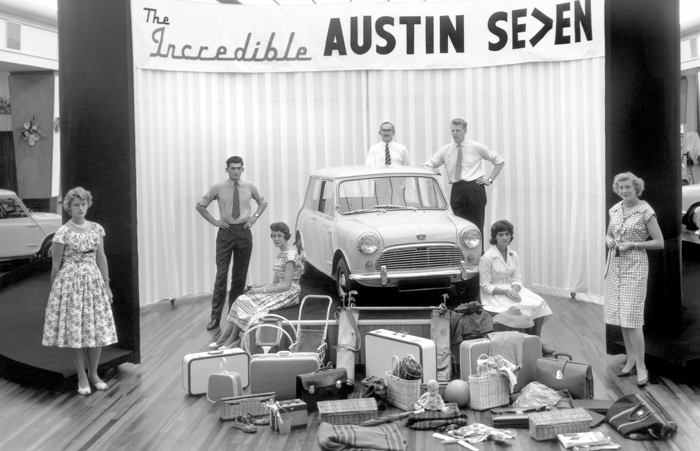
Lots of space inside with minimum dimensions outside, seats for four passengers, impeccable driving characteristics, superior fuel economy, and a very affordable price – precisely this was the brief the creator of the Mini, automotive engineer and designer Alec Issigonis, received from BMC’s Top Management. And the brilliant ideas he implemented in developing this two-door for a family of four had an impact quite sufficient for more than one single car, an impact therefore carried over successfully to other model variants.
Right from the start the very first sales brochures proudly presenting the Morris Mini-Minor highlighted the car’s clear and steadfast orientation to the future. But to what extent these prophecies would really come true, hardly anybody would have believed back then.
One of the reasons for this outstanding success is that from the start the Mini met all the requirements of its time, while offering further qualities in the same process. Measuring just 3.05 metres or 120″ in length and selling at a retail price of £ 496, the Mini was simply perfect for small parking spaces and low budgets. Through its driving qualities and the charming character of its proportions alone, the Mini was however also of great interest to the ambitious motorist seeking not only compact dimensions and superior economy, but also sporting performance particularly in bends as well as individual style on the road.
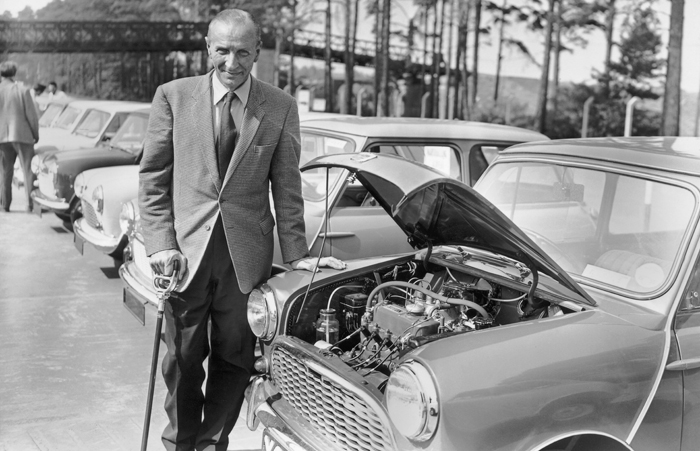
Longer, stronger, more sophisticated, more versatile: the first variants of the classic Mini. Introducing the classic Mini, Alec Issigonis, the creator of this unique car, clearly fulfilled his mission. The Morris Mini-Minor and the Austin Seven, differing solely through their radiator grille, wheel caps and body colour, were both powered by a four-cylinder engine fitted crosswise at the front and delivering maximum output of 34 hp from 848 cubic centimetres.
The performance of both models was identical, as was their luggage capacity of 195 litres or 6.83 cubic feet at the rear. Everybody was thrilled by the generous space available, the efficient but powerful engines, the good roadholding and the comfortable suspension this new compact car had to offer. But Issigonis was already looking far into the future – and he was not the only one.
As early as in 1960, BMC added a Mini Van to the classic Mini. Then, proceeding from this van structure with its closed side panels, BMC introduced an Estate version with glass windows all round as well as two rear doors, like the Van.
Like the saloons, this body variant was also marketed as the Morris Mini-Traveller and the Austin Seven Countryman with exactly the same technical features. And at the latest in 1961 the potential of the classic Mini really became clear once and for all, the year starting with the introduction of the smallest of all transporters, the Mini Pick-Up. Just half a year later two other Minis, this time at the noble end of the scale, saw the light of day: the Wolseley Hornet and the Riley Elf.
Now, therefore, two further BMC brands were able to benefit from the concept of the classic Mini, both models proudly bearing their own distinguished look through their majestic radiator grilles, an extended luggage compartment and swallow-tail wings at the rear.
A very special variant destined more than any other to create the legend of the classic Mini made its appearance in the second half of the year: the Mini Cooper. John Cooper, the famous engineer and manufacturer of sports cars already a close friend of Alec Issigonis, had recognised the sporting potential of this new small car right from the start, when the first prototypes appeared on the track. So he received the go-ahead from BMC’s top managers to develop a small series of 1,000 units of the Mini Cooper featuring a modified power unit enlarged in size to 1.0 litres and offering maximum output of 55 hp.
The response to this car entering the market in September 1961 was quite simply euphoric, with only one further request from enthusiasts everywhere: even more power! So Issigonis and Cooper enlarged engine capacity to 1,071 cc, raising engine output to 70 hp.
This made the Mini Cooper S a truly exceptional performer not only on the road, with Finnish driver’s Rauno Aaltonen’s class win in the 1963 Monte Carlo Rally marking the starting point for a truly unparalleled series of outstanding success in motorsport. The highlight, of course, was three overall wins in the Monte Carlo Rally in 1964, 1965, and 1967.
Mini Moke to the Mini Clubman

In August 1964 BMC presented yet another version of the classic Mini originally conceived for military use: the Mini Moke, a four-seater open all round and destined to remain in the price list for four years.
The “bodyshell” of this unique car was made up, for all practical purposes, of the floorpan with wide, box-shaped side-sills, together with the engine compartment and windscreen. To the event of rainfall, a folding soft top appropriately referred to as a “ragtop” at least tried to provide certain protection.
Using the drivetrain and technical features of the “regular” Mini, the Mini Moke became a genuine success particularly in sun-drenched parts of the USA and in Australia.
By 1967 the time had come for a thorough update of the classic Mini, the car receiving a more powerful engine offering 38 hp from a larger capacity of 998 cc.
Two years later the Mini Clubman joined the range as a slightly larger model with a somewhat different front end compared to the classic Mini. Indeed, this sister car was some 11 cm or 4.33″ longer than the original, the Estate version replacing the Morris Mini-Traveller and the Austin Seven Countryman measuring exactly 3.4 metres or 133.9″ in length, while width, height, and wheelbase remained unchanged.
At the same time the Mini Cooper was taken out of production, being replaced by the top model in the Clubman range, the Mini 1275 GT developing 59 hp from its 1.3-litre power unit.
A number of other details also changed in 1969, the front sliding windows so typical of the classic Mini since the beginning being replaced on all models by wind-down windows, the door hinges at the outside being moved to the inside, and a special “Mini” badge now standing out proudly on the engine compartment lid.
The Mini for All Classes
Alec Issigonis saw the Mini from the start as a car for everybody – for all kinds of drivers and all social classes. He therefore sought, through the car he had created, to solve the everyday problems of individual mobility.
With this in mind, the compact and economical Mini was exactly the right answer for increasingly dense traffic in the inner city and for the concerns at the time about the reduction of oil supplies following the Suez Crisis.
But soon it became clear that the Mini was much, much more. Its concept alone was so convincing that the car was seen and acknowledged as a trendsetter. Its sporting qualities made the Mini a genuine winner, its charming design made it incredibly popular throughout the population.
So suddenly the Mini had become a genuine cult, its innovative and non-conformist character perfectly reflecting the spirit of the 1960s, at a time when progressive concepts, the thrill of adventure, and even a certain lack of respect versus conventional values dominated the world.
This was a car quite different from others but nevertheless offering more and providing even more fun – exactly the right car at the right time. Very quickly, therefore, fashion creators, musicians and other artists were captivated by the unique style of the Mini, stars discovering the qualities of the car and the world recognising the qualities of the Mini as a star itself.
Member of Society
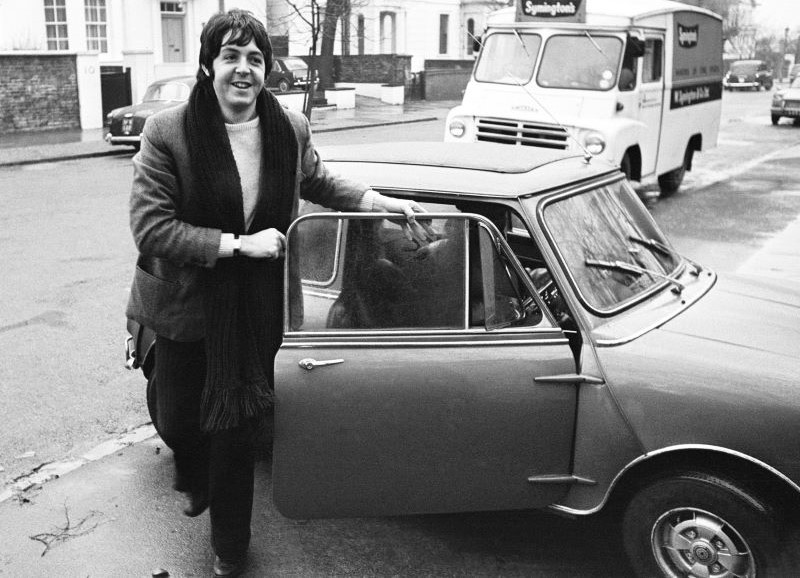
The classic Mini quickly gained the reputation of a car for everybody on all levels of society. While Issigonis still regarded practical and economically-minded families seeking sensible mobility at low cost as his target group, he was also aiming at all levels of society as potential drivers of the Mini.
Lord Snowdon, a good friend of Alec Issigonis, deserves the honour to have introduced the classic Mini into the society in London. One of the first owners of this small classic and completely thrilled by the car’s compact dimensions and excellent handling, Lord Snowdon soon became a common sight driving speedily through the British capital. As the husband of Princess Margaret, he obviously used his muscle, making sure that in 1960 Issigonis had the opportunity to present his small car to nobody else but his sister-in-law, Queen Elizabeth herself. So when the Queen took her seat next to Issigonis in the Mini, enjoying a lap through the big park of Windsor Castle, the classic Mini had really made a Royal breakthrough.
In the years to come the classic Mini became a genuine scene car particularly in Great Britain, gaining growing popularity throughout all levels of society, in all age groups, and with all nationalities. Time and again, prominent artists gave further momentum to the great reputation of this small performer. Fashion designers Paul Smith and Mary Quant discovered their love for the Mini, stars in the pop and rock scene such as The Beatles, Eric Clapton and David Bowie expressed a clear pledge to this small athlete from Britain.
Trends destined to soon influence not only the fashion, art or music scene worldwide, but also the world of politics and society, came out in full power from Swinging London in the 1960s. Paul Smith, who, among other achievements, became Britain’s most famous designer of men’s fashion by combining classic designs with modern, in many cases very bright and almost screaming colours, even created a limited Special Edition of the Mini in the 1990s.
A unique, one-off Mini boasting paintwork created by Smith in his typical multi-colour stripe livery became at least as popular as this special series, even though it was built only once.
Mary Quant, the style icon of British women’s fashion and the inventor of the mini-skirt, was also inspired by the classic Mini. Shortly after she received her driver’s licence, she ordered a black Mini and later created her own Special Edition characterised by features such as the seat upholstery in black-and-white stripes.
Mini and film
Nobody knows how often the classic Mini served in films and television as a means of transport or as the star in the background. It is to be admired, at any rate, in the 1966 cult classic “Blow Up” and of course in countless TV and cinema appearances by comedian Rowan Atkinson better known as Mr Bean.
The classic Mini is also one of the very few cars ever to play a leading role in the cinema, for example in the 1969 classic “The Italian Job” starring Michael Caine. The whole film virtually revolves around only one subject, a wild pursuit through Torino with three Mini Coopers. No surprise, therefore, that immediately after the film had premiered Rover launched a special series of classic Minis finished like the film stars themselves and proudly bearing the title of the film.
Mini and rock’n’roll
The British music scene in the 1960s had the same broad impact as the British world of fashion, musicians from Britain presenting that unique and unmistakable British style in truly revolutionary songs. And with the Mini offering very similar style and character, the stars were obviously thrilled by the new car. So bands like The Beatles, The Who or The Spencer Davis Group as ambassadors of a new British culture gaining growing popularity the world over also helped to promote the Mini and its unique image.
The legends and stories all about the Mini and its role as a means of transport for the stars remain fascinating to this very day. In 1964, for example, John Lennon ordered a Mini although at the time he did not even have a driver’s licence. His colleague George Harrison lent his Mini to Eric Clapton in 1967 and only got it back three years later. And the story about Spencer Davis is that he wrote the biggest hit his band ever had while driving through the night in the rainy Scottish Highlands on an almost empty tank. That was when, looking at the fuel gauge, only one thought went through his mind: “Keep on Running!”
Made in England

The first Mini was an Austin Seven coming off the production line in Austin’s Longbridge Plant in Birmingham on 4 April 1959. The team of twins was subsequently completed five weeks later, the first Morris Mini-Minor leaving the Morris Plant in Oxford on 8 May.
The two models were presented to the public together for the first time on 26 August 1959. Despite their different origin, the Austin Seven and the Morris Mini-Minor were virtually identical, the only distinctions on the outside being their radiator grilles, the wheel caps and body colours: The Austin Seven was available in Tartan Red, Speedwell Blue, and Farina Grey, the Morris Mini-Minor came in Cherry Red, Clipper Blue, and Old English White.
Production at the two plants continued for ten years with the model built in Longbridge bearing the name Austin Mini as of 1962.
Plant Oxford, which had been building cars since 1913, built exactly 602, 817 units during this period, all of them the basic version of the four-seater. All other model variants ranging from the Mini Van through the Mini Pick-Up all the way to the Morris Mini-Traveller and Austin Seven Countryman were built in Longbridge.
In 1969 all production activities were concentrated at the Longbridge Plant, with the model range being streamlined and Mini becoming the brand name for this revolutionary compact car. So the days of the twin brothers (or sisters?) were over once and for all.
Gallery
(1970-2000) Mini Cooper
Numerous special versions of the classic Mini with all kinds of highlights – from sporting to trendy, from distinguished to fresh – entered the market as of mid-1970.
Between 1980 and 1983 the model range was streamlined appropriately, with the Clubman, Estate and Van leaving production. The “only” car left over, therefore, was the classic Mini with its 1.0-litre power unit now delivering 40 hp. And customers, simply loving the car, remained faithful to this little performer for years to come, the five-millionth classic Mini coming off the production line at Plant Longbridge in 1986.
In 1990 fans the world over were delighted to celebrate the comeback of the Mini Cooper once again entering the model range. Now this special model was powered in all cases by a 1.3-litre, production of the 1.0-litre in the Mini ending in 1992 on account of growing requirements in terms of emission management. So from now on all models came with the 1,275-cc power unit and fuel injection.
Yet another new variant of the classic Mini made its appearance in 1991 as the last new model in the range. And this was indeed the only Mini to originate not in Britain, but in Germany: Like some tuners before him, a dedicated Mini dealer in the German region of Baden had cut the roof off the classic Mini, turning the car into an extremely attractive Convertible. And contrary to earlier attempts, the result was so good this time in its quality that Rover Group, now responsible for the classic Mini, decided to buy the construction tools and production equipment for the Mini Convertible, which from 1993 to 1996 accounted for sales of approximately 1,000 units.
Production of the classic Mini finally ceased once and for all in the year 2000. In the course of time more than 5.3 million units of the world’s most successful compact car had left the production plants in numerous different versions, among them some 600,000 cars built at Plant Oxford between 1959 and 1968.
View today’ MINI

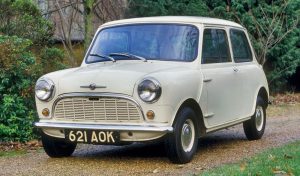
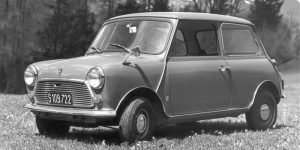


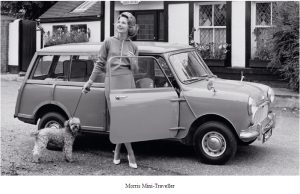

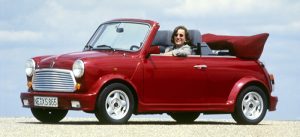
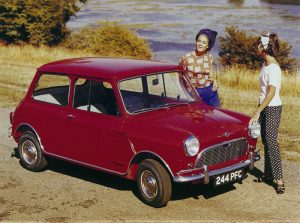
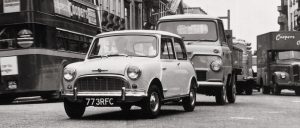
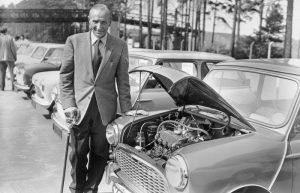


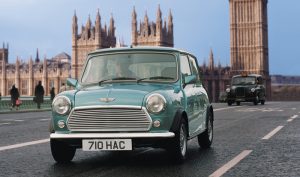
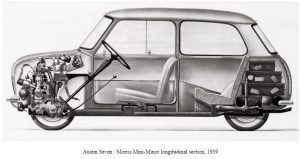



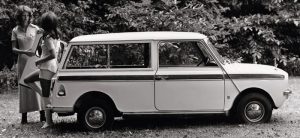

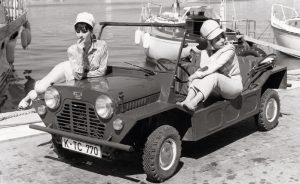
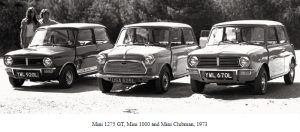
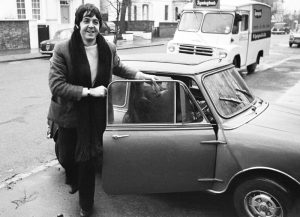

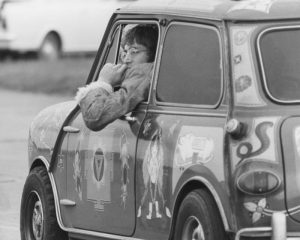
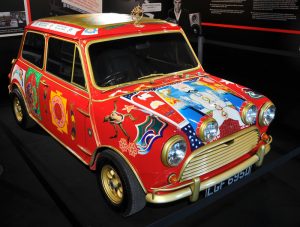



You must be logged in to post a comment.